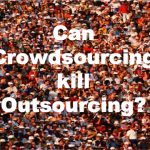February 10th, 2011 — Uncategorized Tagged journalism tasks are getting tougher, sports bloggers
Since journalism tasks are getting tougher, the resources available to journalists are shrinking. Well, that isn’t good. So what’s the best thing to do? The best thing to do here is to embrace technology and create a more open approach to gathering and presenting information.
This chapter focuses on three important news reporting methods that are becoming the focus for more and more news operations in the the United States.

Crowdsourcing: “The Internet allows enthusiastic communities to come together and provide the value for a given Web site. Crowdsourcing focuses that community power on a specific project and demonstrates how a group of committed individuals can outperform a small group of experienced (and paid) professionals.”
Open-source reporting: “The term ‘open source’ refers to design, development and distribution ‘offering practical accessibility to a product’s source.’ Applying this concept to journalism means using transparency in reporting in order to provide a benefit to your audience and possibly acquire benefits from your audience.”
Pro-am journalism: “The most unfiltered form of collaborative journalism allows the audience to publish directly to the same platform, or Web site, that professional journalists use to publish their news.”
The best part of this chapter is the section about link journalism and sports bloggers. You’ve got to love any textbook that discusses, well, blogging about sports in general.
February 10th, 2011 — Uncategorized Tagged concern for the future of the newspaper industry, Joel Achenbach, wide range of outlets
Should there be any concern for the future of the newspaper industry? There are many doubters, but Joel Achenbach doesn’t believe there should be anything to fear. Why? Because Achenbach believes that “literature is its own reward.”

Achenbach also knows what our central medium is and what people want in terms of mediums:
“Our future is on the Web. This is the mantra in newsrooms. And the Web lets us discover how many readers each article attracts. The data can be scrutinized in real time, moment to moment. Inevitably, this is going to change the way we do business — excuse me, I mean the way we do journalism.”
A central idea in this article is that news outlets will never go anywhere if they chase readers. By collaborating with them, the readers will find their way to that outlet. Let the reader choose what they want. The media has a wide range of outlets, so why not be able to use them all?
February 8th, 2011 — Uncategorized Tagged 2001, blogroll, election of 2004, elements of blogging, September 11, trackback
Chapter 2 of “Journalism Next” is all about the elements of blogging and what it means to have a blog. The first thing Briggs states is that every college journalist should have a blog. That’s a given, clearly because I am blogging right now. Another point is that every journalist who is trying to get a job automatically should have a blog.

While many people don’t really know what blogs are all about, it’s good to know why they serve an importance. Briggs first states how blogs changed Web publishing. After September 11, 2001, blogs became an effective way for people to share their thoughts and feelings and give their opinions on what was happening to the country.
Since then, blogging has gained a lot of momentum ranging from the war in Iraq, to the election of 2004 to the election of 2008 and so on.
Briggs goes on to talk about blog basics, including terms such as post, permalink, trackback and blogroll, which are necessary to know when becoming a true “blogger.” The bottom line that Briggs makes is that, “if you can find the fire to blog, you will reap the rewards.”
February 6th, 2011 — Uncategorized Tagged Building an HTML page, creating a Web page, Mark Briggs, The File Transfer Protocol
Mark Briggs, the author of the book “Journalism Next,” breaks down the most basic Web technologies in the first chapter. The point he makes is that we must get the most out of our “online existence” and must grasp the most basic concepts. Once we grasp those concepts, it makes it easy to send and receive digital information

Throughout the chapter, Briggs goes through the following building blocks that are needed for your knowledge of the Web:
- How the Internet, Web servers and Web browsers work
- How to set up an RSS reader and subscribe to feeds (ex. news alerts and searches)
- The File Transfer Protocol
- Web Design Basics
- How Web pages work
- Building an HTML page
- Cascading Style Sheets (basically, making Web sites look awesome)
Briggs ends the chapter by stating that the more you know about digital content, the more prepared you will be when working for a digital-content operation. When one knows a lot about this information and are able to go above and beyond on the Web, the easier it will be when getting a job, creating a Web page or just simply browsing the Internet.
There are no limits on the Web, so the more you know, the more you can do. It’s that simple.
January 31st, 2011 — Uncategorized
Welcome to onMason. This is your first post. Edit or delete it, then start blogging!



